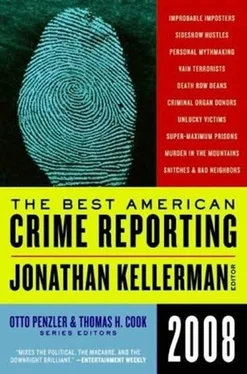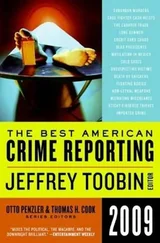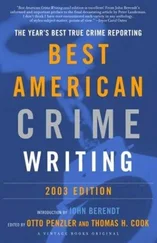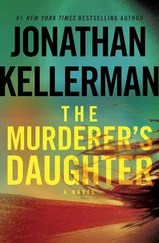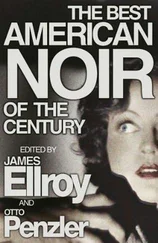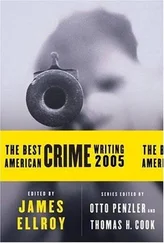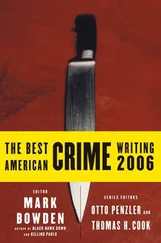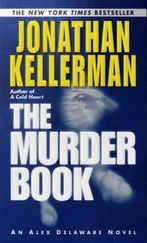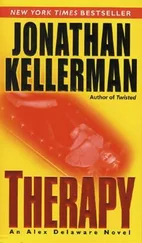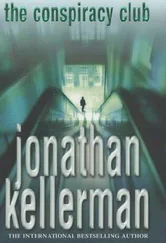The sign over its beige stucco facade calls the Kozy Korner a “Cut-Rate & Lounge.” Two doors separate the bar from the street. The first opens onto a grungy vestibule where a cashier sells beer and liquor from behind a bulletproof window. The second is locked; customers must be buzzed through. Once inside, they are greeted by a dark, narrow room. A Baltimore Ravens poster is affixed to one wall. A rendering of the Last Supper, with a black Jesus and black disciples, decorates the other. Three video gambling machines flash and hum.
When Dowery arrived, a dozen other patrons were packed into the space. He recognized one of them: a former girlfriend called Toot. They chatted inside the doorway while he smoked and sipped a beer. Just after 10 o’clock, the door opened, and two men entered. This time Dowery’s sixth sense-the feeling that had told him to turn around on his porch that morning a year earlier-failed him. One of the men drew a gun, pointed it at Dowery’s head, and fired. Then the other did the same. This time, the doctors couldn’t save him.
And although the bar was crowded, no one has come forward to say they saw a thing. It’s just another homicide in inner-city America, with no suspects, and no witnesses.
JEREMY KAHN is an independent journalist whose work has appeared in The Atlantic Monthly, Newsweek, the New York Times, the Boston Globe, The Guardian, Fortune, The New Republic, Smithsonian, Foreign Policy, and Slate. Previously, he served as managing editor of The New Republic and was a staff writer at Fortune. He recently moved from Washington, D.C. to New Delhi, India.
Coda
As a writer, you want all your stories to matter-you want them to be read, to have an impact. But in this case, that desire was particularly strong. I desperately wanted to wake people up, to make them think about the way in which witness intimidation reinforced the inequality of the American justice system-the way it put whole inner-city neighborhoods essentially beyond the reach of the law. I hoped that out of the tragedy of John Dowery’s death, some good might come. But I have enough experience to know that merely exposing a wrong rarely rights it-that places like East Baltimore would not be the way they are if it were so easy to bring about change.
Since this story was first published in The Atlantic Monthly , the “stop snitching” ethos-some even call it a “movement”-has received increasing attention from the national media. African American columnists, commentators, and community activists have expressed outrage and dismay at the acceptance of this code of silence in America’s inner cities, as well as anger at the hip-hop stars and professional athletes who condone and legitimize it. (Unfortunately, few white commentators or politicians have seemed as exercised.) But the marketing juggernaut that romanticizes “gangsta” culture shows no sign of changing course. So the rapper Cam’ron, without any hint of shame or guilt, freely admits to CNN’s Anderson Cooper that talking to the police would “hurt my business.” Never mind who else gets hurt-that’s none of Cam’ron’s business. Meanwhile, local police and prosecutors-whose business it is to see that justice is served-remain confounded by the epidemic of witness intimidation. In some cities, like Newark, prosecutors have stopped bringing cases in which there is just one witness because of the likelihood that intimidation will derail the prosecution. This policy keeps lone witnesses safe-sometimes-and it conserves the DA’s precious budget, but it hardly makes neighborhoods safer or provides justice to victims’ families.
When I wrote this story, I assumed John Dowery’s murder would never be solved. Police and prosecutors were furious over his killing-determined to show that no one could execute a federal witness with impunity-but they had crashed into that familiar brick wall of silence. I wasn’t optimistic they could break through. Still, Baltimore’s entire law enforcement community-lead by the local FBI field office-was helping to work the case. And as U.S. Attorney Rod Rosenstein points out in this story, the feds can be pretty persuasive. Eventually, the wall cracked.
On November 20, 2007, almost a year to the day after Dowery was killed, federal prosecutors charged two men, Melvin Gilbert, age thirty-three, and Darron Goods, a twenty-one-year-old known on the street as “Moo-man,” with his murder. Prosecutors allege that Gilbert ran an East Baltimore heroin, cocaine, and marijuana distribution ring that called itself “Special.” Tracy Love, aka “Boo-Boo,” and Tamall Parker, aka “Moo-Moo,” were ranking members of Special, according to prosecutors, and Dowery was killed to prevent him from testifying against the gang. In addition to Dowery, prosecutors allege that members of Special killed at least four others, including at least one other witness. In January 2008, the U.S. Attorney’s office announced that it would seek the death penalty against Gilbert. As of this writing, the case had yet to come to trial.
Dean LaTourrette: A SEASON IN HELL
FROM Men’s Journal
ERIC VOLZ WAS TRAPPED. a large crowd had gathered outside the small-town courthouse, screaming, “Ojo por ojo!” -an eye for an eye. Volz had just finished a preliminary hearing for the alleged rape and murder of his ex-girlfriend Doris Jimenez, and despite considerable evidence pointing to his innocence, the judge ruled to allow his case to go to trial. But the people in the town of Rivas, Nicaragua, wanted more than justice. They wanted revenge.
“We’re not going to let you get away with it,” they chanted in Spanish. “We’re going to kill you.” Looking out the window, Volz could see that the angry mob numbered well over 200, some of them waving sticks and machetes, their faces both enraged and excited at the prospect of violence against the gringo. His only protection was several local police officers, along with a U.S. embassy security officer named Mike Poehlitz. The plan was to escape via the back door, a scheme that evaporated moments later when a friend of Volz’s called on his cell phone and said there was a man with a gun waiting outside.
The only option was to exit via the front, where a police pickup truck waited for them, right in the heart of the unruly crowd. As they hit the street and darted for the truck the driver sped away, and the horde closed in, throwing fists and stones. All but one of the cops also fled; the lone officer yanked at Volz’s shirt and yelled, “Corre!” Run.
Though he was handcuffed and without shoelaces, Volz sprinted down the street with the officer and Poehlitz. Miraculously, they made it a block, then ducked into the doorway of a nearby gymnasium, where they barricaded the door and crept from room to room as protesters hunted for them outside. When an unmarked police truck finally arrived an hour later to escort them to the station, they dashed back outside. The crowd moved in, and people jumped on the car. The driver gunned it, hitting some protesters before speeding off toward the police station.
But Volz, a 28-year-old American who had come to Nicaragua with all of the best intentions, was far from free.
Four months later, in late March, Eric Volz sits inside a sweltering 6-by-10-foot cell at La Modelo prison, in Tipitapa, Nicaragua. He cannot feel the gentle breezes that groom and feather the incoming swells that first attracted him to Nicaraguan shores. If he serves his full 30-year sentence he’ll catch his next wave when he’s 57 years old.
The story of how Volz wound up here is every expatriate’s worst nightmare. He was a well-known resident of the Pacific coast town of San Juan del Sur, a surfer’s paradise that he’d helped promote. His ex-girlfriend Doris Jimenez, one of the prettiest girls in town, was found brutally strangled on the floor of her clothing boutique. Volz cooperated with the authorities, only to have them turn on him, he says, after he offended a local police officer. Despite numerous eyewitnesses who said that Volz was two hours away at the time of Jimenez’s murder, and the fact that no physical evidence tied him to the scene, he was convicted and sentenced to 30 years in prison. The trial, many believe, was a travesty of justice that tests the bounds of the absurd.
Читать дальше
